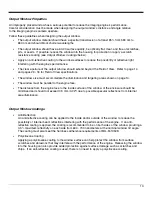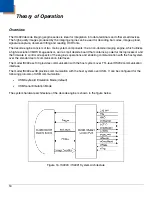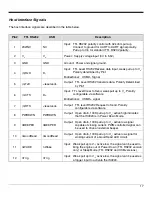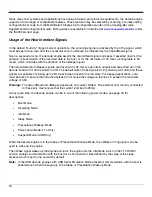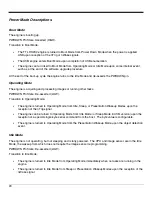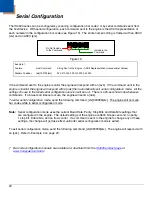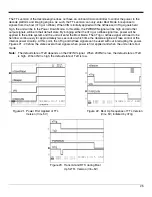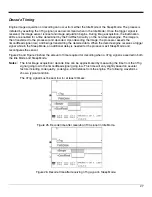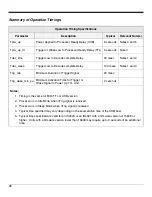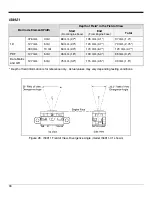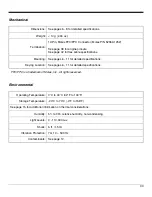
18
Since many host systems and applications have unique formats and protocol requirements, the decode engine
supports a wide range of configurable features. These features may be selected by scanning a corresponding
configuration bar code from the MetroSelect Single-Line Configuration Guide or Area Imaging Bar code
Supplemental Configuration Guide. Both guides are available for download at
www.honeywell.com/aidc
under
the IS4920 product page.
Usage of the Host Interface Signals
In the default “multi-try” trigger mode of operations, the scanning engine is activated by the nTrig signal, which
must be kept active (low) until the successful scan is achieved, as indicated by the nGoodRead signal.
Upon a successful scan, the decode engine asserts the nGoodRead signal and keeps it asserted (low) for the
duration of transmission of the decoded data to the host, or for the minimum of 100 msec (configurable to 50
msec), which coincides with the duration of the nBeeper signal.
The nGoodRead and nBeeper signals are driven with LVC family open drain outputs and are pulled up on the
decode board with 100K resistors to VIN. The default state of these pins is Hi-Z (pulled up via 100K) and these
signals are capable of sinking up to 24mA each when driven to the low state. For beeper applications, care
must be taken to ensure that inductive spikes do not cause the voltage on the lines to exceed the maximum
voltage of 5.5V.
Warning:
The nGoodRead and nBeeper signals are not current limited. The external host circuitry connected
to these pins must ensure that the current is limited to 25mA.
At any given time, the decode engine can be in one of the following power modes, see page 20 for
descriptions:
•
Boot Mode
•
Operating Mode
•
Idle Mode
•
Sleep Mode
•
Presentation Wakeup Mode
•
Power-down Mode (TTL Only)
•
Suspend Mode (USB Only)
When the decode engine is in the Sleep or Presentation Wakeup Mode, the nWake or nTrig signals can be
used to wake up the engine.
The nWake signal wakes up the engine and turns the engine into the Idle Mode, which in the TTL RS232
version enables communication with the host for a short period of time defined by the value of the sleep
timeout, which is set to one second by default.
Note:
In the USB decode engines with USB Serial Emulation Mode activated; communication with the host is
enabled even when the engine is in the Sleep or Presentation Wakeup Mode.
Содержание IS4920
Страница 1: ...IS4920 IS4921 Area Imaging Decode Engine Integration Guide ...
Страница 6: ......
Страница 8: ...2 Models and Accessories Figure 1 Part Number Designations ...
Страница 15: ...9 Figure 10 IS4910 02 IS4911 02 Dimensions ...
Страница 43: ...37 Figure 31 Power Up Boot Up Current Waveform ...
Страница 50: ...44 Dimensions Figure 38 Flex Cable Dimensions P N 77 77104 See installation warning on page 45 ...
Страница 61: ...Honeywell Scanning and Mobility 90 Coles Road Blackwood NJ 08012 4683 00 05325 Rev F March 2009 ...










